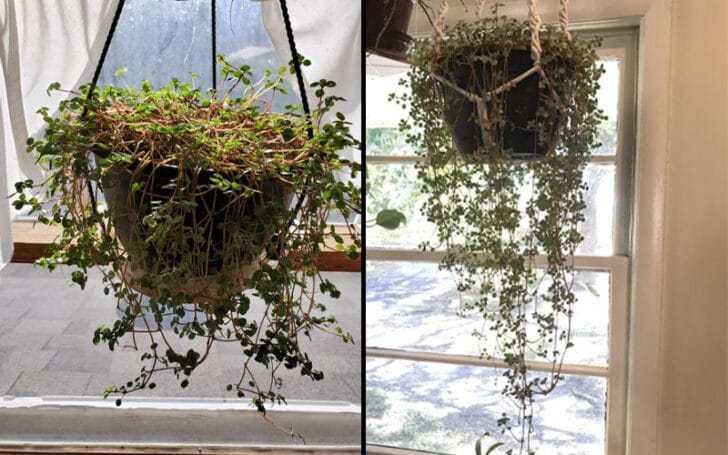Garden
All About Trailing Plant Pilea Glauca – Care, Growth, propagation, and Toxicity
Pilea Glauca care is a question many of our regular visitors send us. So, we decided to cover it from all angles and sides and created an in-depth guide on pilea Glauca care.
Who should read?
If you, your awn Glauca, is dying, giving you a hard time, showing confusing growth patterns or not growing at all, this guide is for you.
We will discuss everything in detail:
Pilea Glauca:
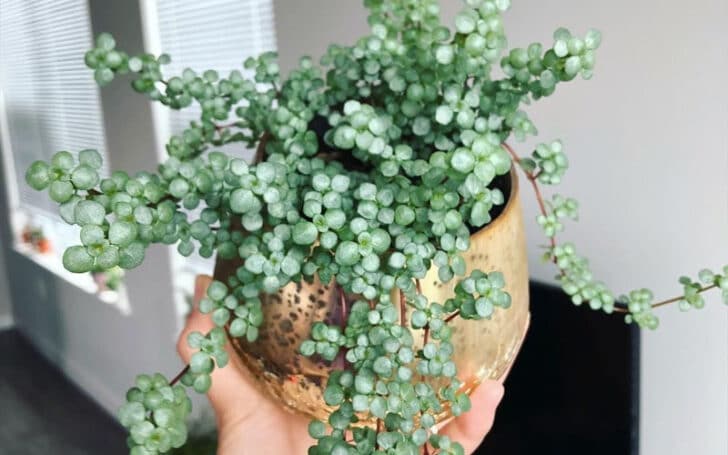
If you google pilea you will find Pilea peperomioides or the lucky Chinese money plant. Yes, it is the most famous variety of the pilea genus.
Pilea has between 600 and 715 known cultivars and belongs to the Urticaceae family, native to tropical, subtropical and warm temperate regions.
However, Glauca is less famous, although it is one of the specialty decorative houseplants known for the silvery powder on its leaves, called pixie dust.
Overview of the Pilea Glauca plant:
| Biological name | Pilea glauca |
| Genus | Pilea |
| Family | Urticaceae |
| Common name | Silver Sparkle Pilea, Pilea libanensis, Aquamarine, pilea glauca baby tears, Red-stemmed Pilea, Grey Artillery Plant |
| Type | succulent, decorative houseplant |
| Famous for | tiny cascades of sparkling leaves |
| Care | Very easy |
Pilea Glauca Flowers:
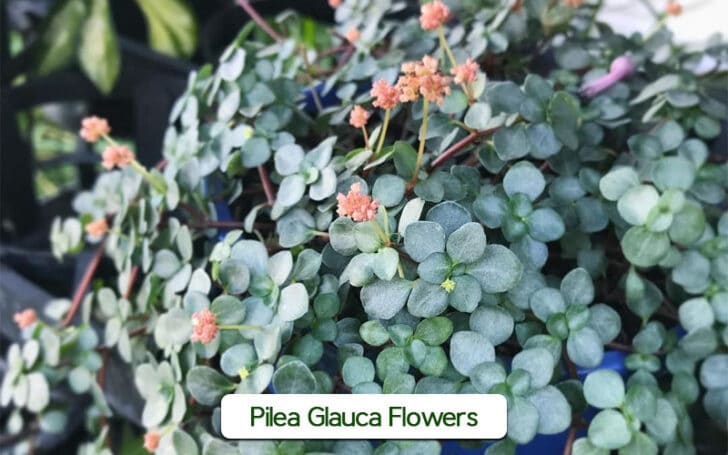
Yes, mature pilea Glauca plants will bloom. The flowers grow in clusters and can be white, peach, or pink in color.
The blooming season is, of course, the blooming season. When the blooming season is over, the pilea Glauca flowers fade.
To get Pilea Glauca flowers, you have to wait until the next spring season.
Pilea Glauca Stem:
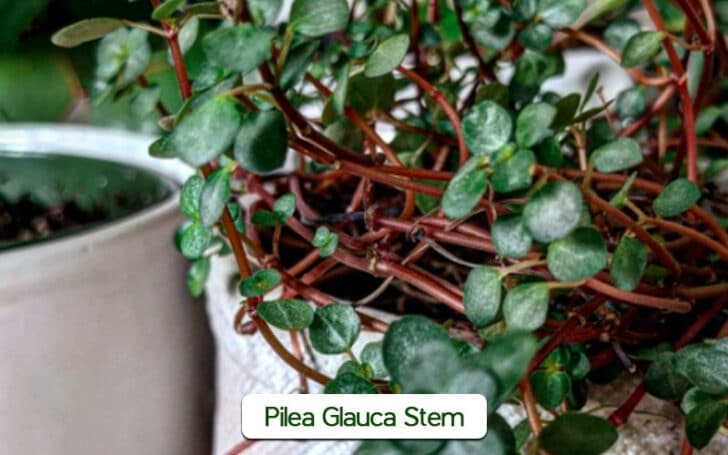
Pilea Glauca is known as red-stemmed Pilea because of the bright red vibrant stem. Yes, you find red colored stems on pilea Glauca, which bears glossy grayish leaves.
Pilea Glauca Leaves:
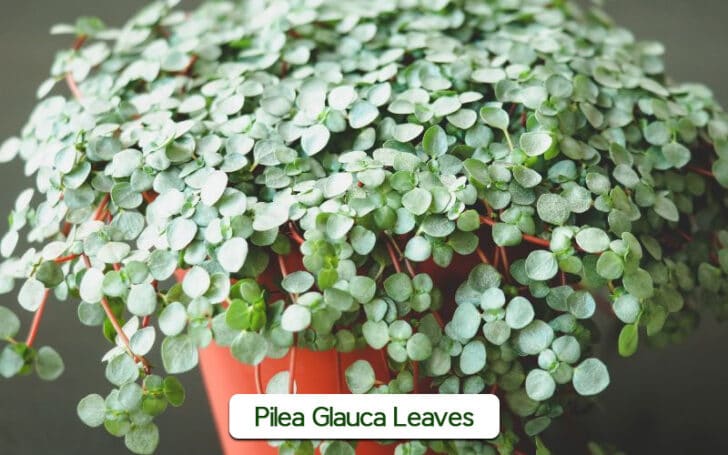
Pilea Glauca has small leaves that grow in clusters.
Pilea Glauca is actually a spring of color with a warm red stem, grayish cascading leaves that grow in clusters and resemble flowers.
The best thing about Pilea Glauca is the silvery shimmery powder that sits naturally on the leaves but looks extremely captivating to see.
Pilea Glauca Growth Rate:
This plant has a very high growth rate and grows rapidly in summer and spring. You may experience growth and slow down these days as winter is not the growing season.
Pilea Glauca is a non-toxic, must-have plant for your home.
Here’s how you can take good care of this plant once you have it.
Glauca Pilea Plant Care:
In summary, pilea Glauca needs indirect sunlight, a well-draining potting mix, moderate humidity and very light fertilization.
Here are the details:
1. Placement / Light:
Before you bring it home, you’ll need to decide on the perfect room for your plant. A room with a west-facing window or an east-facing window with curtains would be an ideal home for your pilea Glauca.
It’s great to meet the sun for two hours at dawn, but nothing more than that.
If the room receives sunlight most of the day, be sure to place curtains on the window to shade between the Glauca and the sun.
Intense sunlight can scorch or burn the cascading leaves of small succulents.
2. Humidity:
Succulents love moisture. But pilea Glauca can do best even with moderate humidity at room level. It’s about the summers.
During the winter months when there is more than enough dryness and low humidity levels, you may need to choose some methods to maintain the moisture level around your little fluffy Glauca baby tears.
For this you can:
- Grow grass and place pilea there with other plants, it will increase moisture levels)
- Place the plant in trays and terracotta pots, fill the trays with water to increase humidity
- Use artificial moisturizers.
- Transfer your succulent to baths
You may also need to move the plant from a warm room to a rather cold room with an suffocated environment.
3. Maintaining Temperature:
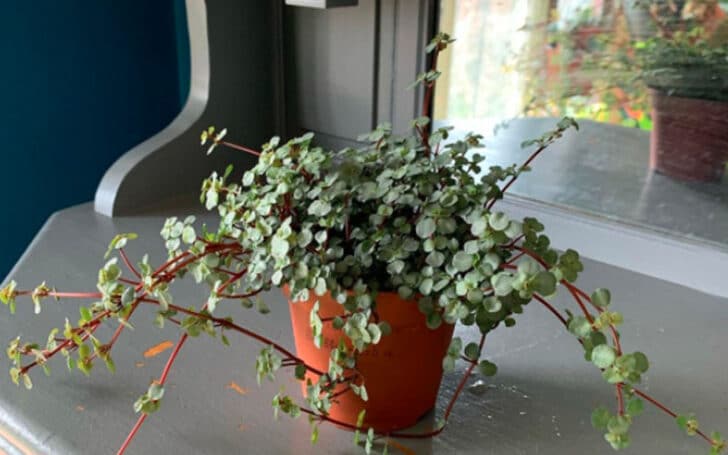
Pilea Glauca is the most comfortable house member of your family. It does not have any special temperature requirements, but grows well at room temperature.
In normal weather you don’t need to do anything special, but when the temperature changes and gets colder and in pilea Glauca you need to be a little more careful.
Therefore, when it is cold, you will need to increase the temperature a little and the humidity a little more around your plant.
4. Watering Requirement:
The fleshy Pilea Glauca stores water inside. Swollen leaves keep water in and sip for days.
Therefore, heavy watering is not recommended for this plant, but you need to be in moderation when watering this beautiful baby tear plant.
How to water is another thing that most gardeners make mistake and eventually have a rotting plant.
Water this plant only when you find that the top of the pot is dry. Also, when watering, make sure that the water reaches the roots but never stays there.
Letting Pilea Glauca stay in water for too long means killing your plant and weakening it with your own hands.
Insufficient watering can also harm your plant. Curled, crunchy or shriveled leaves. Fading is due to dryness caused by not enough water.
Water pile Glauca once a week with the bottom irrigation method, but the schedule can change seasonally.
Some people also write that the leaves of Pilea Glauca get yellow spots, despite adequate and moderate watering – just need.
The answer to your question is the quality of the water. Poor quality water can cause yellow spots under the leaves. To get rid of this, give your glauca plant fresh, purified water to drink.
5. Pot Selection:
Pilea Glauca aquamarine plants stay very happy in terracotta pots with drainage holes in the bottom.
This drainage hole helps remove excess water from the plant and never causes root rot.
So whenever you bring home a pot for this particular plant or any succulent that needs quick draining, use terracotta pots for them.
6. Soil:
As mentioned earlier, the soil should be a well-draining potting mix. Let’s explain here what a well-draining potting mix soil is.
It is an organic soil, well-drained potting mix that does not contain tightly compacted particles that allow water to flow through and reach all parts of the plant.
You can use 50% organic soil and 50% perlite to create a perfect potting mix.
7. Fertilizers:
Pilea Glauca fertilizers are offered with the portion control method.
The plant does not like massive seasonal fertilization, but likes regular monthly fertilization.
You can choose between organic and chemical fertilizers, but make sure you put in the right amount.
For example, organic soil is not that hard, but has low nutritional value. On the other hand, chemical fertilizers provide good nutrients but can be a bit harsh on the plant.
Mix the soil with water so that it reaches all parts of the plant to prevent residue build-up.
8. Pruning:
Pruning feather Glauca gray baby tears isn’t all that difficult due to its cute little size. The plant is small and compact, which makes it easy to prune.
Usually Pilea Glauca does not need special or special pruning because the higher the growth, the more beautiful this plant will be.
When it comes to pruning, check for damaged leaves or dead stems, cut them off, that’s it for pruning.
9. Repotting:
Repotting the plant is only necessary after two to three years. Because the soil in the pot loses its nutrients after a few years and therefore new soil is needed or needed.
The plant does not come out of this pot or grows in size. Therefore, choose the same size pot next time.
You can also change the soil of the same pot after one, two or three years to keep your plant happy.
How to Propagate Pilea Glauca?
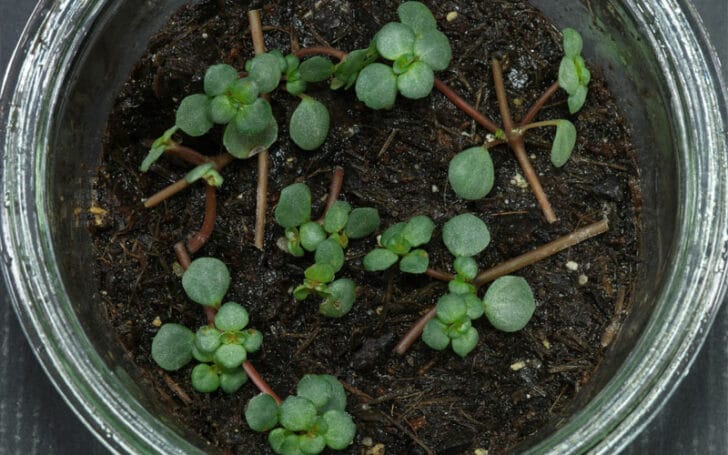
Pilea Glauca silver sparkler is a fast grower so propagation is very easy and effortless. Here’s how you can propagate pilea via a stem cutting.
- Get a terracotta pot
- Put well-draining potting mix in it.
- Cut a few inches of stems with fresh leaves on them.
- Place it in the soil and let it be there
- Guilty
- fertilize
- And see it evolve
Make sure you take good care of the placement. You can also plant cuttings with multiple stems if you need ground cover.
Pilea Glauca Toxicity:
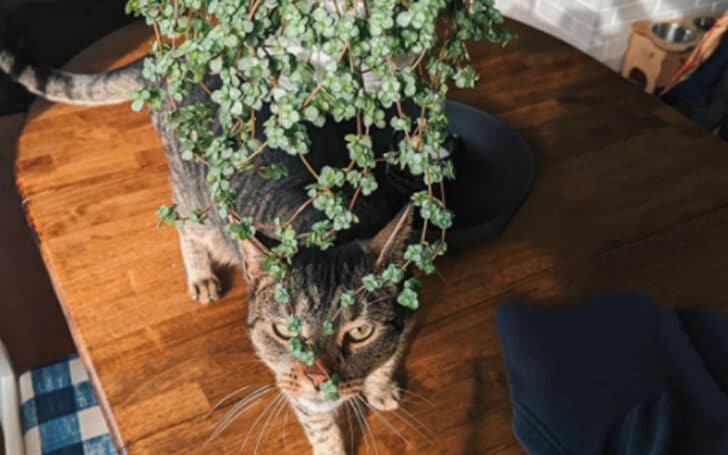
Pilea Glauca is non-toxic to cats, dogs or humans. You can safely have this plant in your home.
Bottom Line:
This is all about Pilea Glauca. We tried to cover all the necessary things. However, if you have any other questions we can’t put in your mind, let us know by commenting below.
We love to hear from you.
Also, don’t forget to pin/bookmark and visit our blog for more interesting but original information.
